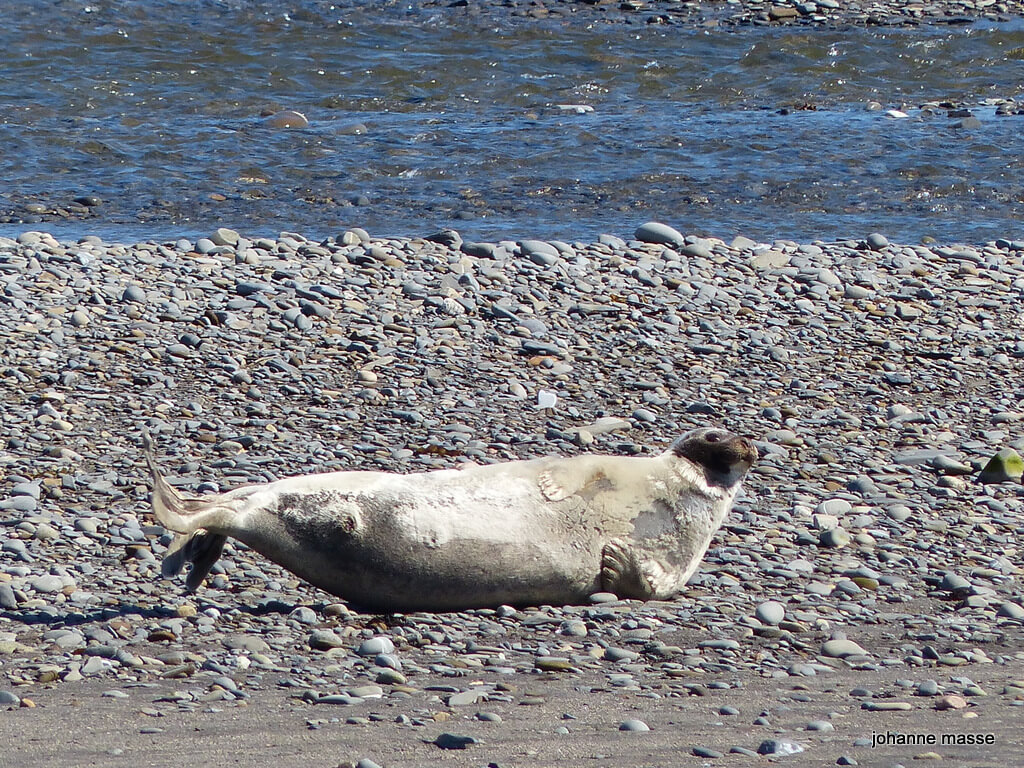Even if they are marine mammals, seals have to return to land for some of their activities. Amphibious in nature, seals split their lives between land and sea, a lifestyle inherited from their ancestor, which was exclusively terrestrial. Pinnipeds mainly seek out places where they won’t be disturbed and with easy access to the water in the event of predation, whether it be to rest, mate, give birth or even moult. All of these activities are essential to its survival.
In spring, it is even more important for the seals to find quiet places to come out of the water. For example, on April 15 in the town of Cloridorme in the Gaspé Peninsula, the Quebec Marine Mammal Emergency Response Network received a report on its 1-877-722-5346 emergency line for a harp seal lingering near the wharf. Since this is a popular place for a stroll, a volunteer went to the site to document the situation and raise awareness. Her videos and photos showed the male seal to be in good condition but undergoing an important stage in its annual cycle: moulting. Since this biological activity is very energy intensive, the volunteer put up a poster to educate the public on the importance of observing the seal from a safe distance so as not to disturb it.
Why moult?
Every year in early April, harp seals begin to moult. Adult males and juveniles (the latter known as “bedlamers”) moult first, followed by adult females around the third week of April. The moult lasts about four weeks, during which time the entire fur coat will fall off and be replaced with a new one.
During this period, seals only feed occasionally and lose more than 20% of their body fat! Quite a diet! Moulting requires increased blood flow to the skin surface. However, this causes the seal to lose heat more quickly. Therefore, if it stays out of the water, the seal can better retain its body heat, especially on a warm sunny day.
Seals therefore need to be out of the water in spring for two reasons: to retain their heat and to conserve as much energy as possible during their moult. It is therefore essential to maintain the greatest distance possible from seals resting on shore in order to avoid frightening them away.
After moulting, adults and young harp seals return to their summer feeding grounds in the Arctic, completing their annual cycle.
What should you do in the presence of a seal?
- It is normal to see seals out of the water. Do not attempt to coax it back into the water or spray it; this is not necessary.
- Keep your distance (at least 50 metres) so that the seal can rest and move about freely.
- It is unlawful to handle a seal, force it back into the water or interact with it in any way.
- Do not attempt to feed it. Its survival depends on its ability to feed itself and capture fresh prey.
- If you are on the water in a boat, be extra cautious to avoid colliding with or approaching the seal.
- Careful! A seal is capable of moving quickly and can be unpredictable. This powerful wild animal can bite and transmit disease.
- Keep dogs on a leash. A free-roaming canine might approach the seal, increasing the latter’s stress levels and provoking aggressive reactions that might cause injury to the seal or your pet. Seals and dogs can also spread diseases.







